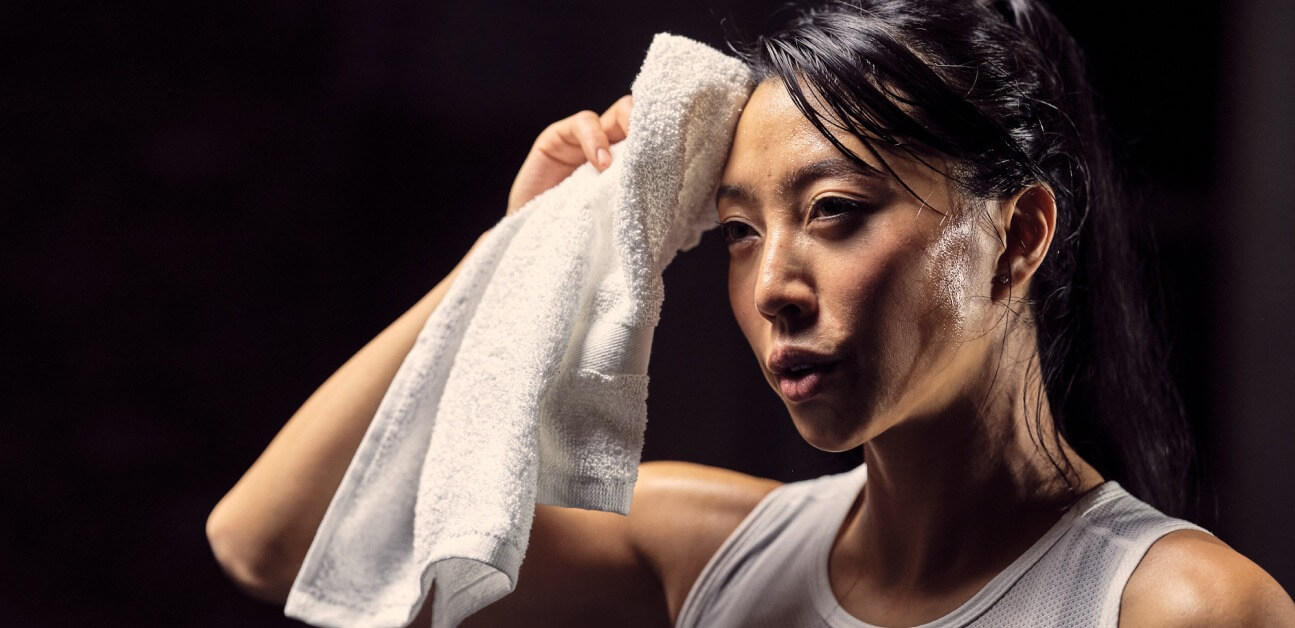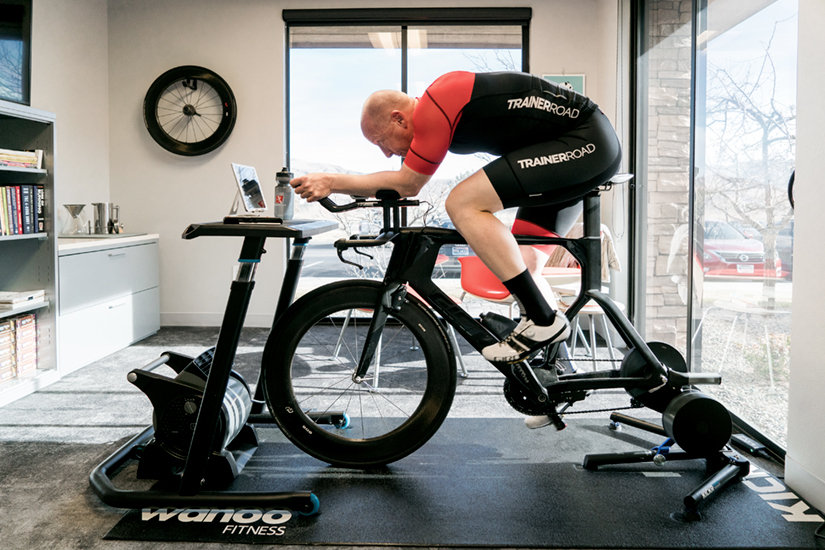Does Your Indoor Training Setup Have Enough Cooling?

When it comes to indoor training, the most common mistake we see athletes make is with their cooling. Heat can negatively affect your performance and workout quality. How can you make sure your indoor training setup has enough cooling?
Heat and Endurance Performance
When you exercise, most of your energy is converted to heat. Only about 25% of what you expend is actually used to push the pedals. While a little bit of this heat is a good thing, too much is detrimental to your performance. This happens because your working muscles begin to compete for blood flow with the body’s thermoregulatory process.
Adaptive Training
Get the right workout, every time with training that adapts to you.
Check Out TrainerRoadThe human body autonomically regulates core temperature to keep your systems functioning in optimal conditions. Simply put, thermoregulation keeps you alive. As you heat up, that autonomic nervous system dilates blood vessels near the skin to increase blood flow. The more blood flow to the skin, the more you’ll sweat. As your sweat evaporates, it cools the skin and reduces the temperature of your blood. But that increased blood flow to the skin for cooling means less to the working muscles.
Why You Need Cooling for Indoor Cycling
The good news is that your body is remarkable when handling the heat. The bad news is that humidity is a serious obstacle to evaporative cooling, especially when training indoors. Riding inside means that you don’t benefit from natural airflow from the outside. Even if you’re in a cool room, riding without that airflow creates a humidity bubble around you. Instead of evaporating, sweat drips onto the floor—doing little to cool you down.
Training indoors without sufficient cooling can be unpleasant and profoundly impact the quality of your workout. Not only that, it can affect upcoming workouts due to increased stress and dehydration. Since structured training aims to improve your work capacity, having enough cooling allows for more effective increases in fitness.
Cooling Your Indoor Training Setup
The cooling of your training area will depend on environmental factors and personal preference. If you’re in a freezing cold garage, you’ll still need some air movement, but not nearly as much as someone training in a warm sunroom. Personal preference plays a role too. You want to make your training space as comfortable as possible.
That said, adequate cooling requires some trial and error, especially if you’re new to indoor cycling. As a general guideline, notice how you feel and how much sweat ends up on the floor. Sweat that doesn’t evaporate isn’t effectively lowering your temperature. So if you’re cleaning lots of sweat from your bike, chances are you need more cooling.
The Best Fans for Indoor Training
The first tool to beat the heat is a good fan—the more, the better. Fans come in all shapes and sizes, but our top recommendation is a high-quality blower fan. Blower fans move a good amount of air in a focused, narrow beam so you can point them directly at your torso or head. Any fan you choose will be better than none, but these types of fans are a good investment.
How many fans you need is all about your specific situation. If you’re training in a cool, dry place, one fan may work for you. On the other hand, if you have one fan and are still heavily sweating, it’s a good idea to add another. As a heavy sweater who trains in a hot and humid garage, I use three fans during the warm months. Experiment and see what works best for you and remember that if sweat is finding its way to the floor, you need more cooling.
Pro Tip: A few remote-controlled outlets provide a convenient way to control your fans without getting off the bike.
Where to Place Fans?
For the most part, fan placement comes down to personal preference. But in general, you’ll want your fan pointed towards your chest. Some athletes don’t like the air blowing directly into their face, while others prefer it. If you only have one fan, you want to place it where all the air reaches you. A common option is directly in front of the bike, like in this picture of Coach Chad.

However, using a trainer desk or sweat catcher can block the air without careful placement. Another option is placing a fan on the side or elevating it.
Pro Tip: If you’re using multiple fans, don’t place your fans at opposing angles.
Do I need air conditioning?
You’ve probably heard that old saying, “it’s not the heat; it’s the humidity that gets you.” There is truth to that statement. Sweat can’t evaporate from your skin when it’s humid. Even if you live in a drier climate, a small enclosed space can quickly turn into a sauna.
You can reduce the humidity in a few different ways. First, open a window or door. This works best when your location is fairly dry and even better if it’s cold outside. Additionally, you could run a dehumidifier. It’s typically cheaper to run than air conditioning. This won’t lower the ambient temperature of your training space, but it can make it feel cooler. Air conditioning removes a small amount of moisture from the air while making it colder. They are more expensive to operate but can provide the best of both worlds.
More Cooling Tips
- Keep lots of ice in your bottles.
- Ditch the jersey. Wear a light summer base layer or go shirtless.
- Place your training setup in the coldest room you have.
- Soak a small towel in ice water and place it on the back of your neck.
- The more intense the workout, the higher your core temperature, so prepare accordingly.
Heat Training
In almost every situation, we recommend adequate cooling for indoor cycling. However, if you plan on racing or riding in hot conditions, heat training is an effective way to prepare. As you train in the heat, blood plasma volume increases which helps improve your thermoregulatory efficiency. Essentially you want to mimic your event’s environment as close as possible.
That said, heat training should be approached with extreme caution and start very slowly with easy endurance workouts. This type of training is a massive strain so stay on top of your hydration and fueling. For more information on heat training, check out Heat Training and Endurance Performance with Dr. Chris Minson.